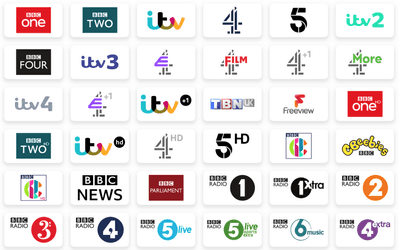Check broadband availability at your new postcode
Before making any decisions, check what broadband services are available at your next address. Some areas may not have access to the same providers or speeds as your current home. Simply enter your new address into our postcode checker and see the deals available to you.
Cancelling or switching broadband
If you’ve checked your new postcode only to discover you can’t take your current provider with you, you have no choice really but to switch.
Fine if you are out of contract, but if you are still tied into an existing contract and have several months to go this could mean paying a cancellation fee. Try talking directly with your provider if this is the case, as it’s not your fault that they aren’t able to reach you with its infrastructure. Virgin Media, for example, no longer charges an early disconnection fee if customers move to an area that is off-net.
Moving your current provider to a new address
If you are happy with your current broadband provider and they offer a service at your next address you can transfer to your new home. Most providers offer a home move service that allows you to transfer your connection to a new address simply by going online. If you choose this option, remember:
Give plenty of notice
Every provider varies, but most require between 2 and 4 weeks notice to schedule and transfer your move. You’ll need to give your new address and moving date.
You might have to pay
The cost depends on the broadband provider and whether you’ll need a new line installed. Many will waiver fees, but some – Virgin Media charge £35, TalkTalk £60 – will add a fee.
You might not be able to get the same package
If you are on full fibre and it’s not available yet at your new address, you might have to move to a partial fibre connection which means slower speeds.
Think about an upgrade
Moving house is a good time to review your broadband, telephone and TV. You can stay with the same provider but your new house has access to better speeds, so consider staying with the same provider but upgrading to a faster package.
Take your equipment with you
If you choose to keep your existing package, you’ll need to take your equipment with you to your new home. So make sure that any routers, modems and mesh systems get packed along with you, too.
Schedule an engineer if needed
Whether you need an engineer when moving homes depends on the type of broadband connection you're wanting at your new address. If you're moving to a property with the same type of connection and network already installed, you should just be able to plug in your router. But if you're switching to a new type – full fibre for example – you will usually need an engineer to install the necessary cabling.
How long will it take to set up the internet in a new house?
This can be anywhere between one and 14 days. A recent Uswitch survey showed the average wait for broadband when moving house was around eight days.
Some providers offer next-day broadband installation, but giving an accurate move date can sometimes be tricky, especially if you are buying a home. You might need an engineer too. And if you are also moving furniture and belongings in you might not want an engineer on the actual same day.
The fastest scenario will be if the home you’re moving to already has the necessary cabling in place – and you’ve told your provider about your move date and address well in advance. Then your new line can be activated remotely and you should be able to just plug in your router and get online.
Which provider installs broadband the quickest?
Most of the major broadband providers take around 7 days to connect customers after a house move. They will use the same network to connect you to their broadband service and it will take longer if a new broadband connection needs to be installed by an engineer.
According to recent research by Uswitch, Plusnet takes the longest time (at almost 10 days) and Virgin Media were the quickest (just under a week). Smaller alternative networks – Community Fibre, Hyperoptic, Gigaclear, Trooli, Zzoomm – can often be quicker, so it’s worth talking to these directly if you want a faster set up. Have a look at the results below.

How can I get internet while waiting for installation?
If you want internet in your new home while waiting for your broadband to be installed or transferred, the easiest option is to get a mobile broadband connection as a temporary service.
Mobile broadband
Rather than fixed fibre-optic cables or a Wi-Fi network, mobile broadband just needs a 4G or 5G signal to deliver your broadband. This can be a great way to stay online whilst you are waiting for your home internet to be set up.
You can access mobile broadband through various devices, including mobile Wi-Fi router hotspots (MiFi), data-only SIM cards, routers with sims, or dongles that plug into your laptop. Most of the big broadband operators – Three, EE, 02 and Vodafone – offer mobile broadband deals through one-month rolling contracts, 12 and 24-month terms. Or, you can just get a data-only sim or dongle and pay-as-you-go.
Some broadband providers will even offer mobile broadband as a backup connection as part of your move home service and will provide you with a mini mobile hub that works as a router at no extra charge. Check with your provider to find out more.
What if I’m renting?
It's not always possible, but try to time your broadband contracts with your tenancy contract if you can.
Some landlords will offer internet that's already up and running included in your rental price. Nice and easy on one hand – you don't have to sort out the whole switch and engineer visit – but it also might leave with broadband that is too slow for your internet needs.
As a renter, you’ll need to get permission from the landlord if your switch requires an engineer to install a fibre line. Your landlord might want to supervise the installation process to make sure there’s no unsatisfactory alterations to the property as some external and internal drilling will probably be required.
See our useful guide for: choosing the best broadband in a rented property.
Setting up broadband in your new home doesn’t have to be stressful. By planning ahead, comparing deals, and scheduling your installation early, you can have a smooth transition without unnecessary delays.
If you’re moving soon, start comparing broadband options todayto find the best service for your new home.





